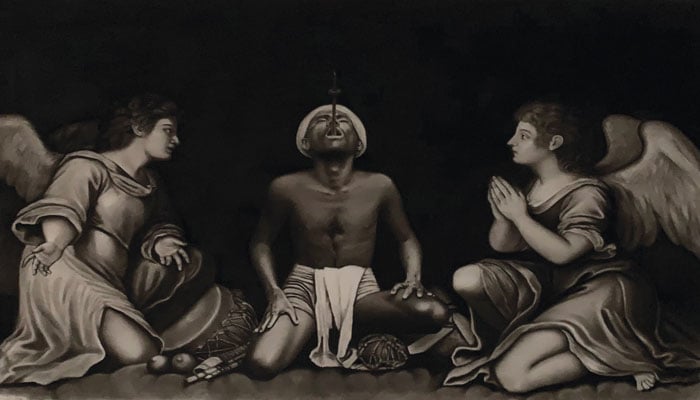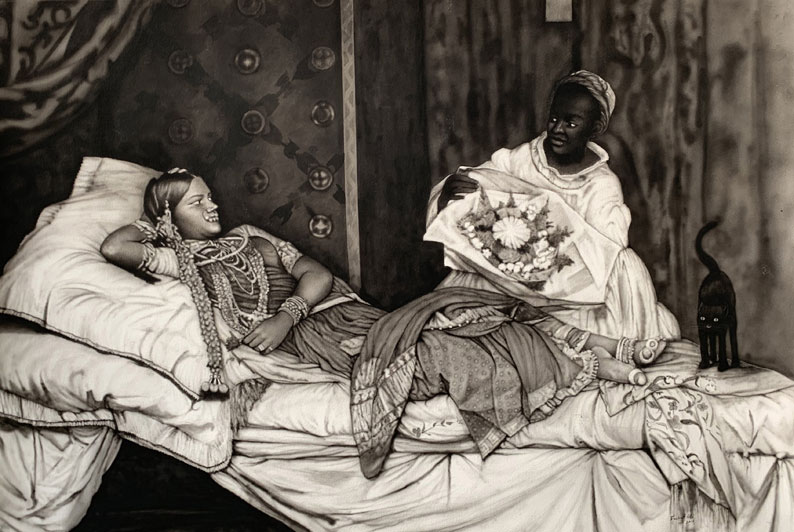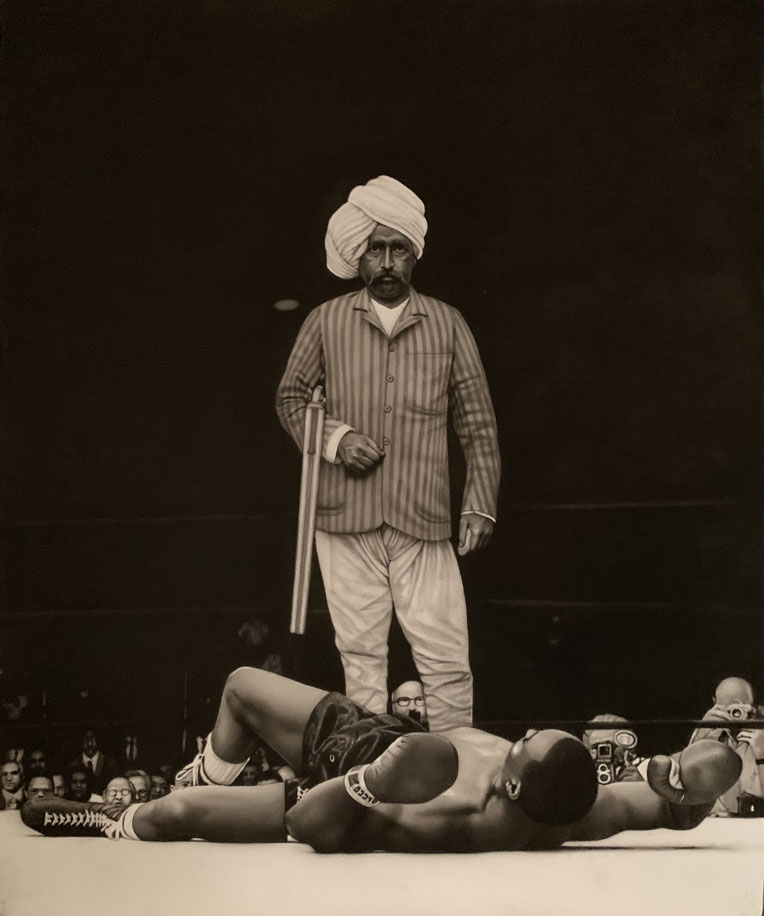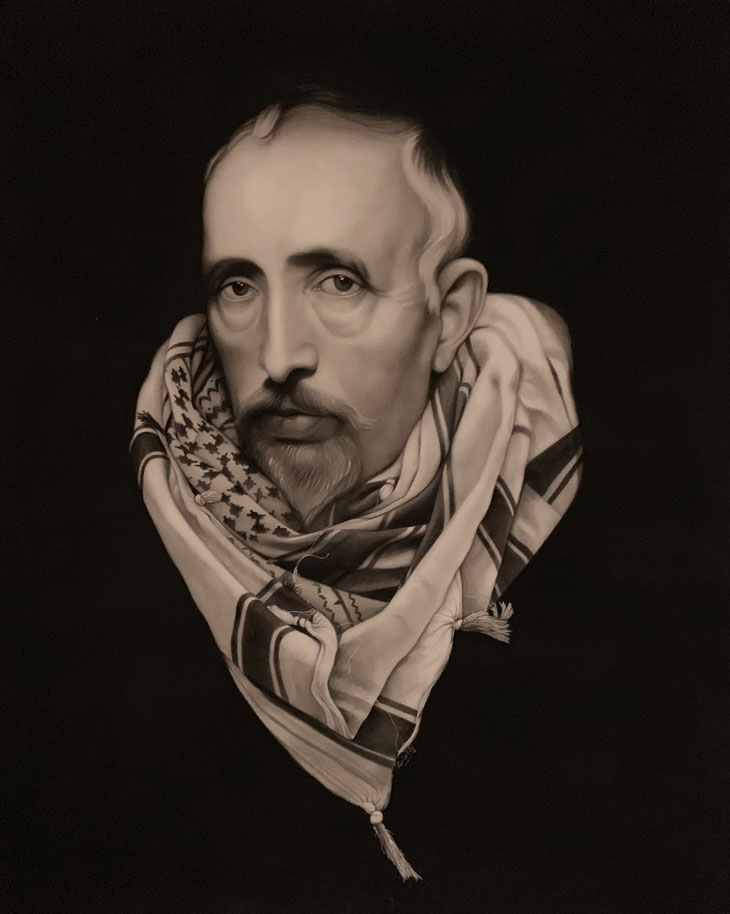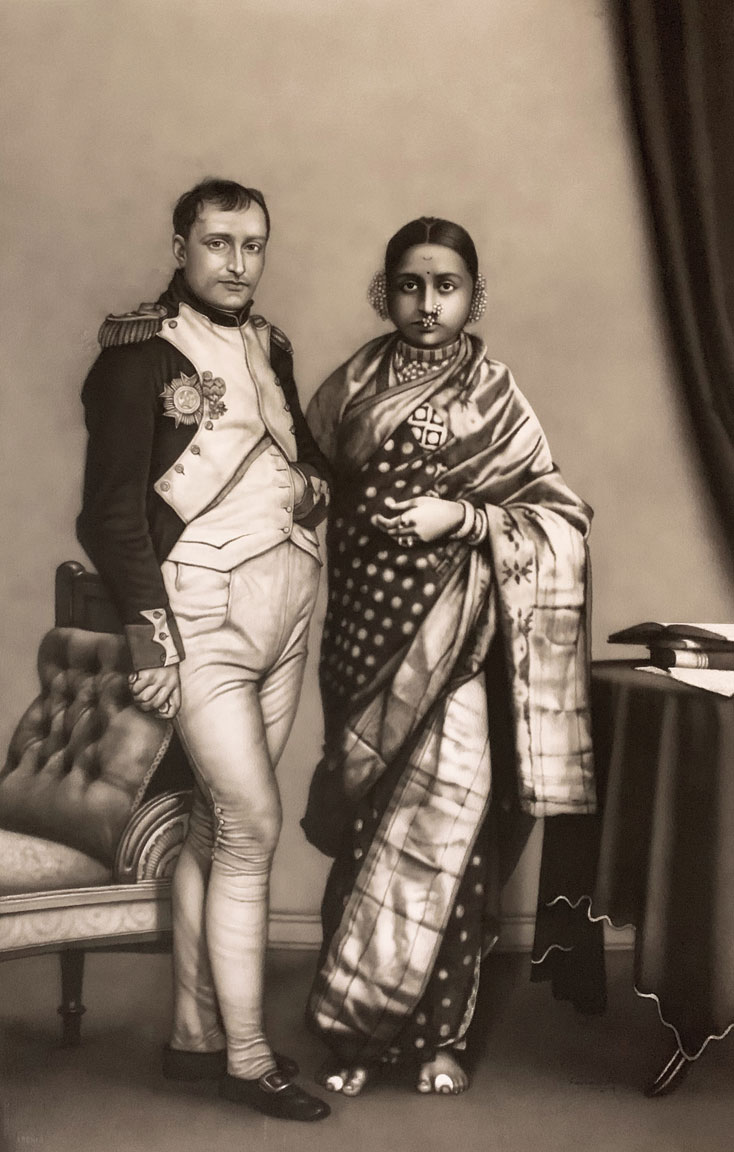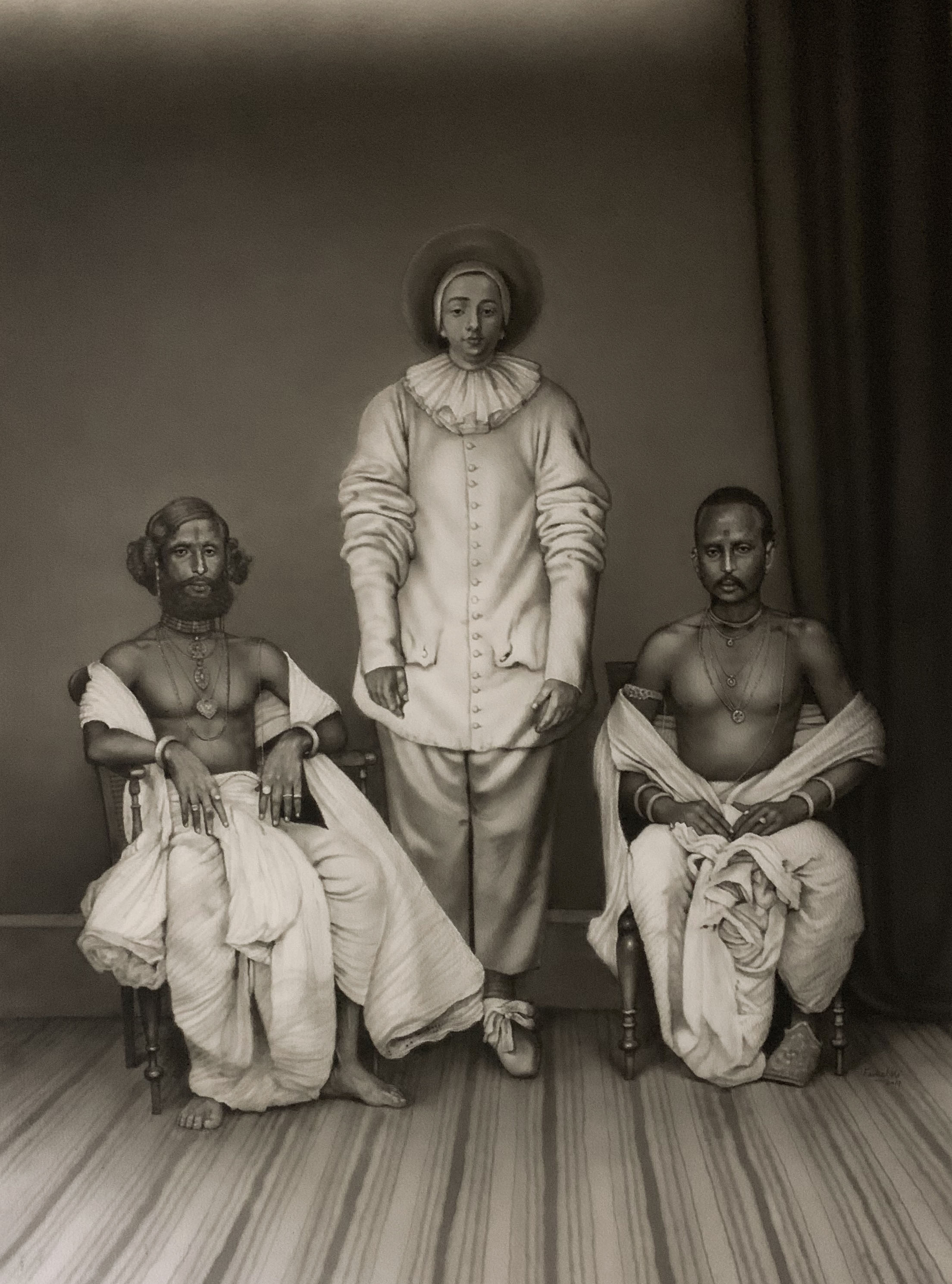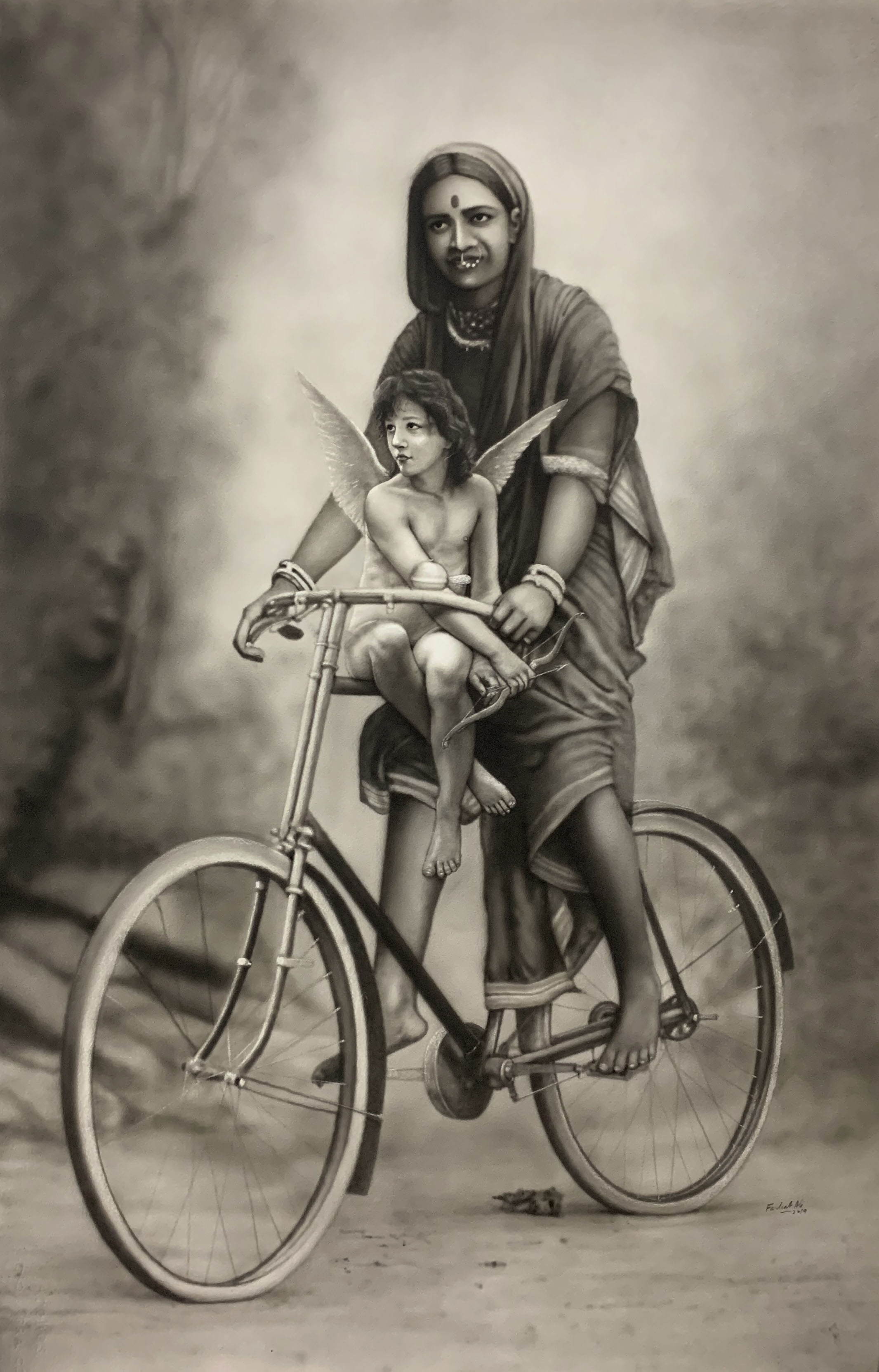Farhat Ali’s latest exhibit is creating stories within stories
Nowadays the artists are painting using today’s modern art with traditional and historical stories creating new ideas and styles. Farhat Ali’s current solo exhibition at Sanat Gallery, Karachi also follows this new approach. Using Indian ink on paper the exhibition titled “Through the Looking Glass and What Farhat Found There” allowed the viewers to enter the myriad imaginary realms, opening the door to a world of new and alternative realities, not confined by cumbersome details of established history, race or even time.
Nowadays the artists are painting using today’s modern art with traditional and historical stories creating new ideas and styles. Farhat Ali’s current solo exhibition at Sanat Gallery, Karachi also follows this new approach. Using Indian ink on paper the exhibition titled “Through the Looking Glass and What Farhat Found There” allowed the viewers to enter the myriad imaginary realms, opening the door to a world of new and alternative realities, not confined by cumbersome details of established history, race or even time.
He has fused the historical images appearing to dissolve into sensuous, contemporary forms and narratives. Exercising his liberty abounding with dramatic monochrome scheme he tried to create a romantic atmosphere in almost all the paintings. These dramatic and romantic expressions are traditionally present in different historic and traditional paintings in various buildings around the world. He wanted to explore the creativity between tradition and modernity.
There was intense referring to an elemental passion that is both intuitive and instinctive, but the imagery in Farhat’s paintings was mainly representative of female forms and other supporting characters whereas in some pieces a male figure replaces the female figure. In some of the works he used religious icons of other cultures and some fairy tale characters.
He balanced his compositions with monotone background in black and white colour, but devoid of other structures or foliage; while in some paintings he blended opulent figures with fairies and servants.
The inspiring themes, which lead to the creation of these images, were observed, heard or read by the artist which when viewed by the viewers unfold many layers of grief, love, war, passion and fear. To unveil the hidden layers behind these narratives was his prime concern, through which he was trying to make viewers percieve the layers of meanings concealed behind the surfaces of the paintings.
Using humor and wit and a careful selection of western and eastern iconography Farhat created this collection work to create written historical accounts in new style. In some pieces he fused the mastery of western art history and pop culture icons from the cinema, with their eastern counterparts.
He used his work to create interesting and amusing narratives of real stories while in another piece, a young Judy Garland from The Wizard of Oz is portrayed next to Pran, her eastern acting contemporary. These figures exist wholly outside the realm of time and logic, allowing for the creation of a new reality.
In a particularly striking piece, Farhat depicts Napoleon as he is seen in Jacques-Louis David’s famous work Napoleon Crossing the Alps, but instead of Napoleon shown heroic and mighty on an equally mighty horse that is in motion on its hind legs, that very Napoleon is shown seated on a camel. The absurdity of this pairing brings in to question the validity of Napoleon’s might and the authenticity of the narrative surrounding his power. The use of the camel, so familiar from Farhat’s local perspective, also serves as a symbol to question the deliberate omission of certain people and facts from recorded history.
In the original Through the Looking Glass and What Alice Found There, Lewis Caroll’s novel unfolds as a game of chess. Upon looking at Farhat’s work, one does recall the chess board, not only for the varying black and white of his chosen medium, but also because of the characters depicted. Using his mastery in skill, Farhat Ali creates stories within stories that form their own narrative, despite how disparate the characters of the story are. His medium and skill tie together these odd pairings in a world that seems to naturally befit them within the picture frame. The pawn in the game of chess is now the viewer, whom Farhat plants into the worlds that he has created through his brush.
-
US lawmakers laud Punjab govt's initiative to modernise brick-kiln
-
Security forces gun down 30 terrorists in multiple IBOs in KP: ISPR
-
MQM-P calls for new province in Sindh
-
US report validates Pakistan military edge over India: PM
-
Banned TTP poses serious threat to Pakistan security: UNSC panel
-
CM Afridi clarifies remarks on by-poll after ECP requests army deployment
-
Dubai sees 3.2m Pakistani passengers in 2025 as airport sets new milestone
-
Security forces kill 23 Indian proxy terrorists in KP's Kurram
